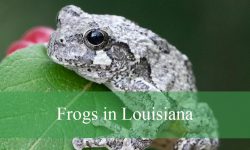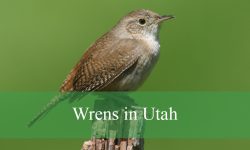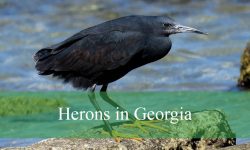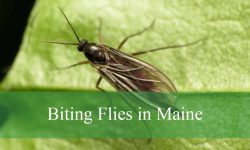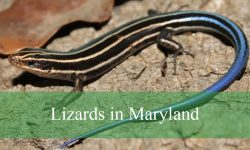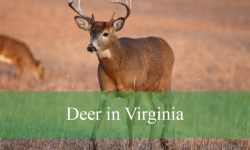Washington State is home to a wide variety of wildlife, and squirrels are among the most visible and active mammals found throughout its landscapes. From deep evergreen forests to bustling suburban parks, squirrels are constantly on the move—climbing, gliding, or foraging. These small creatures play an important role in the environment, especially in seed and fungus dispersal, which supports the region’s rich plant life.
Among the many types of squirrels in Washington State, there is an interesting mix of native and non-native species. Some, like the Douglas Squirrel and Northern Flying Squirrel, are well adapted to dense forest habitats. Others, such as the Eastern Gray Squirrel and Fox Squirrel, have become common in developed areas. Their behaviors, sizes, and appearances vary, making them fun to watch and rewarding to learn about.
This article highlights eight squirrel types you can encounter in the state, along with pictures and key details to help you identify them.
Different Types of Squirrels in Washington State
Douglas Squirrel (Tamiasciurus douglasii)
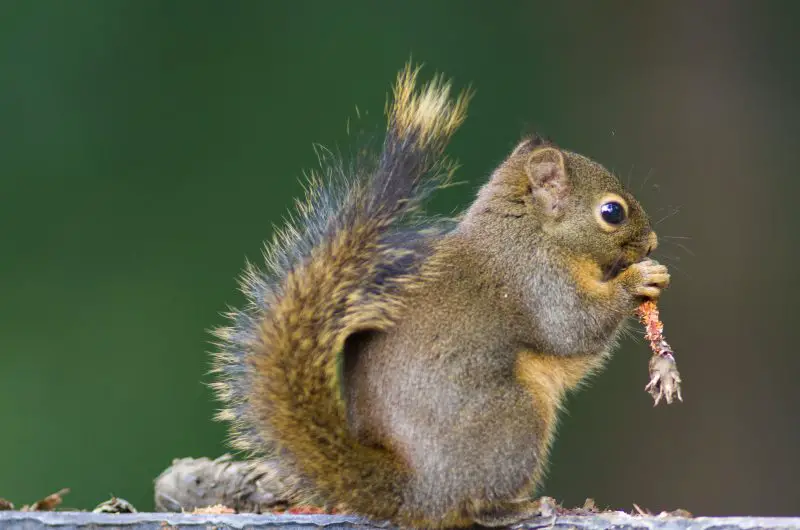
The Douglas Squirrel, also known as the “chickaree,” is a small, native tree squirrel commonly found in Washington’s dense coniferous forests. It measures about 10 to 14 inches in total length, including its bushy tail. This species is recognized by its reddish-brown upperparts, grayish underbelly, and distinct white eye ring. During winter, its coat becomes more grayish, while in summer, the fur appears richer and more vibrant. It is highly vocal, often making sharp chirping or scolding sounds to defend its territory or warn others of intruders.
This squirrel is active throughout the year and does not hibernate. It is diurnal, meaning it is most active during the day, especially in the early morning and late afternoon. Douglas Squirrels are very territorial and will aggressively defend their home range from other squirrels. Their diet includes seeds from conifer cones, acorns, fungi, berries, and occasionally bird eggs. They are particularly known for creating cone-scale middens—piles of discarded cone parts used as food storage sites. These middens are often located at the base of trees.
In Washington State, Douglas Squirrels are most commonly found in mid- to high-elevation forests dominated by Douglas-fir, western hemlock, and ponderosa pine. They prefer mature, closed-canopy forests but can also be seen near campsites and forested residential areas. Their distribution covers much of western Washington, especially in mountainous and national forest regions.
Western Gray Squirrel (Sciurus griseus)
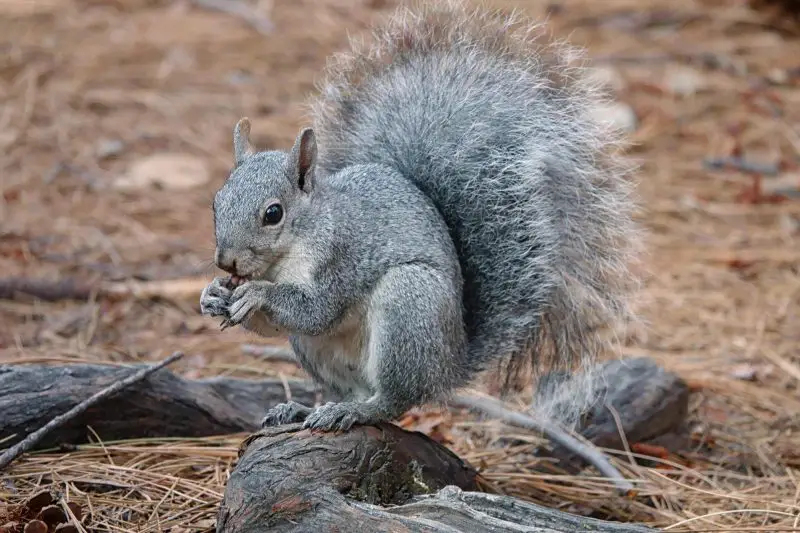
The Western Gray Squirrel is Washington’s largest native tree squirrel and is easily recognized by its elegant silver-gray fur and impressively long, fluffy tail. Adults can reach lengths of up to 24 inches, including the tail, and they typically weigh between 1.5 and 2 pounds. The fur on their back is uniform gray, while the underside is white. Their ears are large and prominent, lacking the tufts seen in some other species. This squirrel moves gracefully through the treetops and is less vocal than its smaller relatives.
Western Gray Squirrels are solitary and shy, spending most of their time high in the tree canopy. They are most active in the early morning and late afternoon, rarely descending to the ground except to forage or bury food. Their diet consists of acorns, pine nuts, seeds, berries, and fungi, particularly truffles. They also store food in caches for winter use. Unlike many introduced squirrels, they avoid urban areas and prefer remote woodlands.
In Washington, this species is found mainly in the south-central and southeastern parts of the state, particularly in oak-pine woodlands and dry forest ecosystems. Once widespread, their population has declined due to habitat loss, competition with invasive Eastern Gray Squirrels, and disease. As a result, the Western Gray Squirrel is currently listed as a threatened species in Washington and is a focus of conservation efforts.
Eastern Gray Squirrel (Sciurus carolinensis)
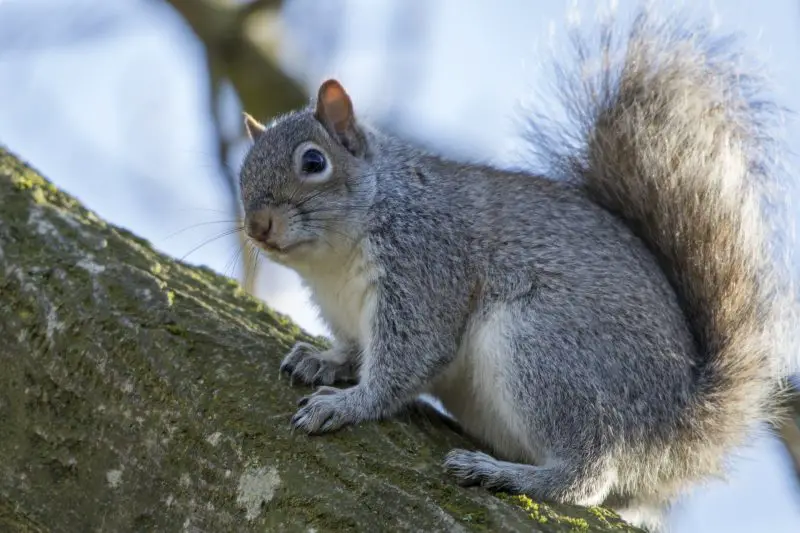
The Eastern Gray Squirrel is an introduced species in Washington, especially prevalent in urban and suburban areas such as Seattle, Tacoma, and surrounding cities. Adults typically measure 18 to 20 inches long, including a thick, bushy tail, and weigh around 1 to 1.5 pounds. Their fur is gray with white undersides, and some individuals may have hints of brown or black in their coat. Albino and melanistic (black) variants can also occasionally be seen. This squirrel is highly adaptable and thrives in a variety of environments.
Eastern Gray Squirrels are known for their intelligence and resourcefulness. They are active year-round, primarily during daylight hours, and are commonly seen running along power lines, climbing buildings, or digging in lawns to bury food. Their diet is broad, including acorns, seeds, fruits, buds, bark, and even bird feeders. They exhibit “scatter-hoarding” behavior, burying small caches of food across their territory to retrieve later in the winter.
In Washington State, their presence is largely limited to the western lowlands, where they have outcompeted native squirrels in many areas. They are particularly dominant in city parks, greenbelts, and residential neighborhoods. While charming to many residents, their expansion poses a threat to native species like the Western Gray Squirrel due to direct competition for food and nesting space.
Eastern Fox Squirrel (Sciurus niger)
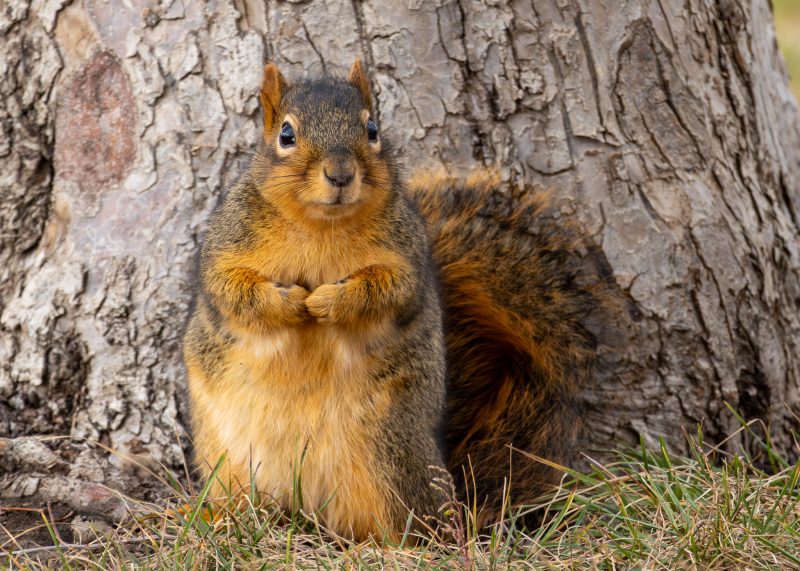
The Eastern Fox Squirrel, another non-native species, is the largest tree squirrel found in Washington. Adults can grow up to 26 inches in length, including the tail, and can weigh as much as 2.5 pounds. Their fur is usually a mix of gray and orange or rusty red, with a distinctive reddish belly and tail. They have strong limbs and large claws adapted for climbing, and their movement is noticeably more lumbering compared to other tree squirrels.
This squirrel is generally solitary and diurnal, most active during the early morning and late afternoon. Unlike some other squirrels, it is more comfortable on the ground and often forages by walking or hopping across open areas. Its diet includes nuts, seeds, corn, fruits, buds, and even insects. Fox Squirrels are also known to raid bird nests for eggs and are regular visitors to backyard feeders.
In Washington, the Eastern Fox Squirrel has established populations in parts of southeastern Washington, particularly around Spokane and adjacent agricultural or park areas. It thrives in open woodlands, farmlands, and urban green spaces where tree cover is patchy but sufficient for nesting. Though not as widespread as the Eastern Gray Squirrel, the Fox Squirrel continues to expand its range in the state, often at the expense of native squirrels.
Northern Flying Squirrel (Glaucomys sabrinus)
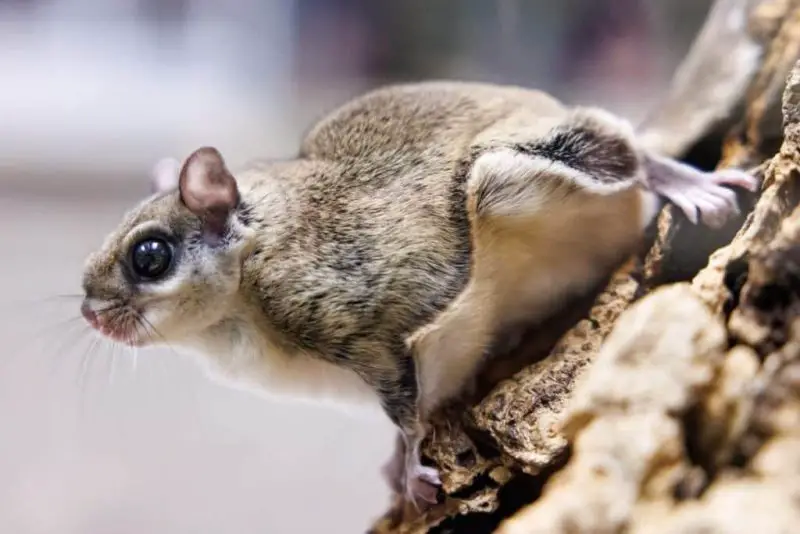
The Northern Flying Squirrel is a nocturnal, gliding mammal native to Washington’s coniferous and mixed forests. Though rarely seen due to its nighttime activity, it is quite widespread in the state. Adults are small, measuring about 9 to 12 inches in total length, with a soft, dense coat of grayish-brown fur above and a whitish underside. Their large, dark eyes are specially adapted for low-light vision, and the most distinctive feature is the patagium—a flap of skin stretching from the wrist to the ankle, allowing them to glide from tree to tree.
Unlike other squirrels that leap or climb, Northern Flying Squirrels silently glide up to 150 feet between trees, using their flattened tail as a rudder. They are social animals and often nest communally during colder months to conserve heat. Their diet consists primarily of fungi (especially truffles), lichens, tree sap, seeds, and occasionally insects and bird eggs. They are important for forest health due to their role in spore dispersal of underground fungi that help trees absorb nutrients.
In Washington, this species is most common in the Cascade Range and the Olympic Peninsula, especially in mature, moist forests with dense canopies and abundant deadwood for nesting. They nest in tree cavities, old woodpecker holes, or build nests from moss and leaves. Despite being elusive, they are an essential part of the forest ecosystem and are sometimes monitored as indicators of forest health.
Townsend’s Ground Squirrel (Urocitellus townsendii)
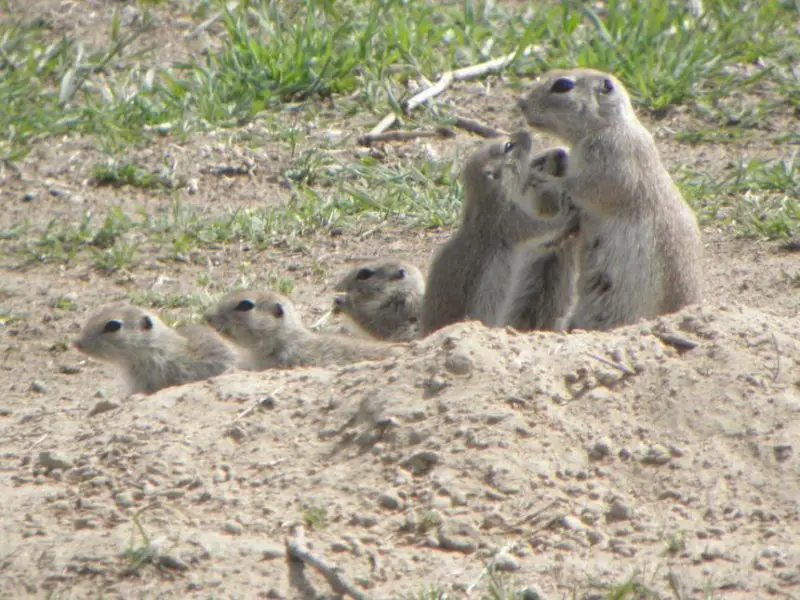
Townsend’s Ground Squirrel is a small, burrowing species found in the arid shrub-steppe and grassland habitats of eastern Washington. Adult squirrels measure about 7 to 10 inches long and weigh just a few ounces. Their coat is a dull gray or brown with subtle spotting or striping along the back, providing camouflage in dry, open environments. They have short tails and small ears, and their appearance may be confused with juvenile prairie dogs or chipmunks at a glance.
This ground squirrel is active only for a few months each year. Emerging in early spring, it feeds intensively on grasses, seeds, and forbs before retreating underground by mid-summer to escape the dry heat—a state known as estivation. They live in colonies and dig extensive burrow systems, which they use for shelter, reproduction, and avoiding predators. Townsend’s Ground Squirrels are important prey for many species, including hawks, coyotes, and snakes.
In Washington, they are primarily found in the Columbia Basin and other dry regions of eastern counties such as Benton, Franklin, and Grant. Habitat conversion for agriculture and invasive plant species have contributed to local population declines. Conservationists monitor this species closely, as it is considered sensitive in parts of its range.
Golden-mantled Ground Squirrel (Callospermophilus lateralis)
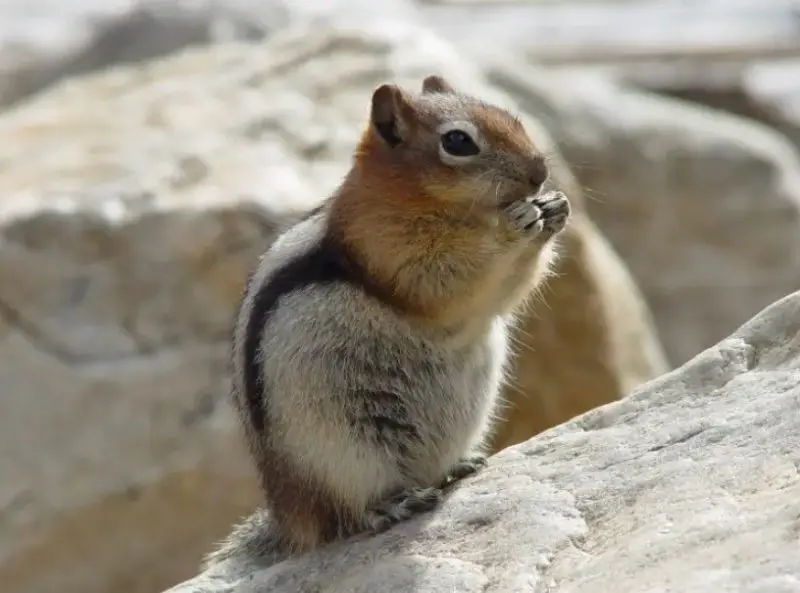
The Golden-mantled Ground Squirrel is often mistaken for a chipmunk due to its distinctive black and white stripes running along its back. However, unlike chipmunks, it lacks facial stripes. Adults are about 9 to 12 inches long, with a reddish-golden mantle around the neck and shoulders, a buff underside, and a moderately bushy tail. This species is robust and alert, often seen sitting upright while surveying its surroundings.
These squirrels are diurnal and highly active during the warmer months. They hibernate through winter in underground burrows lined with grass or leaves. Their omnivorous diet includes seeds, nuts, berries, insects, and even small vertebrates or carrion when available. They are also known for cheek-pouch foraging—stuffing food into expandable cheek pouches to transport back to their burrows.
In Washington, Golden-mantled Ground Squirrels are typically found in mountainous regions, including the Cascade and Olympic ranges, and rocky alpine meadows. They favor well-drained soils near forest edges, campgrounds, and rocky outcrops. Their bold behavior and colorful appearance make them one of the most easily observed ground squirrels in the state, especially in national parks and recreational areas.
Washington Ground Squirrel (Urocitellus washingtoni)
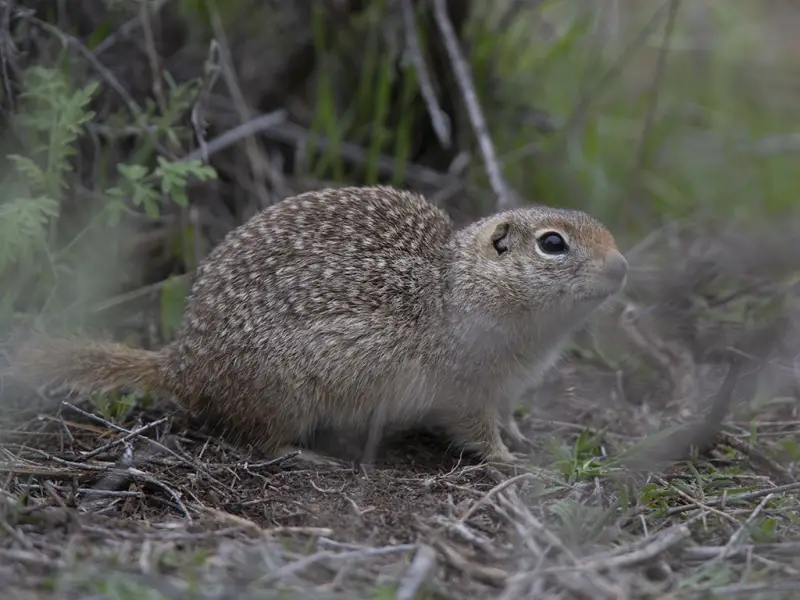
The Washington Ground Squirrel is a rare and region-specific species found only in a small portion of southeastern Washington. It is a small, light brown ground squirrel with a short, slightly flattened tail and faint speckling along its back. Adults are usually 7 to 10 inches long and have a delicate, slender build. Because of their limited range and secretive behavior, they are not commonly encountered.
These squirrels are seasonally active, emerging from hibernation in late winter and returning to their burrows by early summer. Their brief active season is focused on feeding, mating, and rearing young. They consume a variety of grasses, wildflowers, and seeds, depending on what is available in their sagebrush and bunchgrass habitats. Washington Ground Squirrels are solitary and rely on extensive burrow systems for protection from predators and extreme weather.
Restricted to parts of Franklin, Adams, and Grant counties, their habitat has been heavily impacted by agricultural development, making them one of the most threatened squirrel species in the state. Conservation efforts are ongoing to preserve remaining habitat and study population trends. Due to their narrow range and declining numbers, they are considered a species of concern in Washington State.
FAQs about Types of Squirrels in Washington State
What are the most common squirrels in Washington State?
The most common squirrels in Washington include the Douglas Squirrel, Eastern Gray Squirrel, Western Gray Squirrel, and Northern Flying Squirrel. In urban areas like Seattle and Tacoma, the introduced Eastern Gray Squirrel is especially prevalent, while native species are more common in forested and mountainous regions.
Are flying squirrels found in Washington?
Yes, Washington is home to the Northern Flying Squirrel (Glaucomys sabrinus), a native species that inhabits moist coniferous and mixed forests. Although rarely seen due to its nocturnal habits, it is widely distributed in the Cascade Range, Olympic Peninsula, and other mature forest areas.
What is the largest squirrel species in Washington?
The Eastern Fox Squirrel (Sciurus niger) is the largest squirrel found in Washington, reaching lengths of up to 26 inches including the tail. However, it is not native and has established populations mostly in southeastern Washington. Among native species, the Western Gray Squirrel is the largest.
What squirrel species are native to Washington?
Native squirrels in Washington include the Douglas Squirrel, Western Gray Squirrel, Northern Flying Squirrel, Townsend’s Ground Squirrel, Golden-mantled Ground Squirrel, and the Washington Ground Squirrel. These species are naturally adapted to the state’s forests, shrublands, and alpine regions.
Are any squirrel species in Washington threatened?
Yes, the Western Gray Squirrel and the Washington Ground Squirrel are considered threatened or species of concern due to habitat loss, disease, and competition with invasive species. Conservation efforts are ongoing to protect their populations and restore natural habitats.
What do squirrels in Washington typically eat?
Squirrels in Washington eat a variety of foods depending on the species. Tree squirrels such as the Douglas Squirrel and Western Gray Squirrel eat pine seeds, acorns, fungi, berries, and tree buds, while ground squirrels feed more on grasses, seeds, flowers, and insects. Some also store food for winter.
Where can I see squirrels in Washington?
You can spot squirrels in urban parks, forested areas, national forests, and mountain trails. Eastern Gray Squirrels are common in cities, while Douglas Squirrels and Flying Squirrels are often found in natural forests. For rare species like the Washington Ground Squirrel, sightings are limited to specific areas in southeastern Washington.
Are squirrels in Washington active year-round?
Most tree squirrels in Washington, like the Douglas and Eastern Gray, are active year-round, although they may reduce activity in harsh weather. In contrast, ground squirrels such as the Townsend’s and Washington Ground Squirrel are seasonally active, often entering hibernation or estivation during extreme temperatures.
Can squirrels damage property or gardens?
Yes, some squirrels, especially the Eastern Gray Squirrel and Fox Squirrel, may cause minor property damage by gnawing on wood, wires, or invading attics. They can also dig up gardens or bird feeders in search of food. Proper squirrel-proofing can help minimize these issues.
Are chipmunks and squirrels the same?
No, while they are both members of the Sciuridae family, chipmunks and squirrels differ in appearance and behavior. Chipmunks are smaller, have distinct facial stripes, and are primarily ground dwellers, while squirrels can be arboreal or terrestrial, depending on the species.

